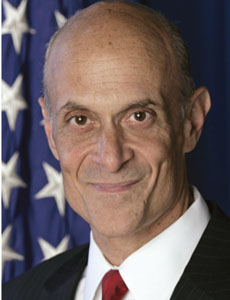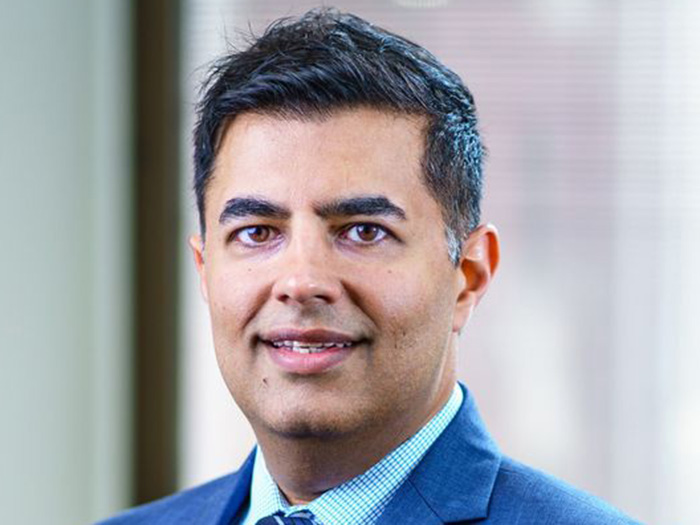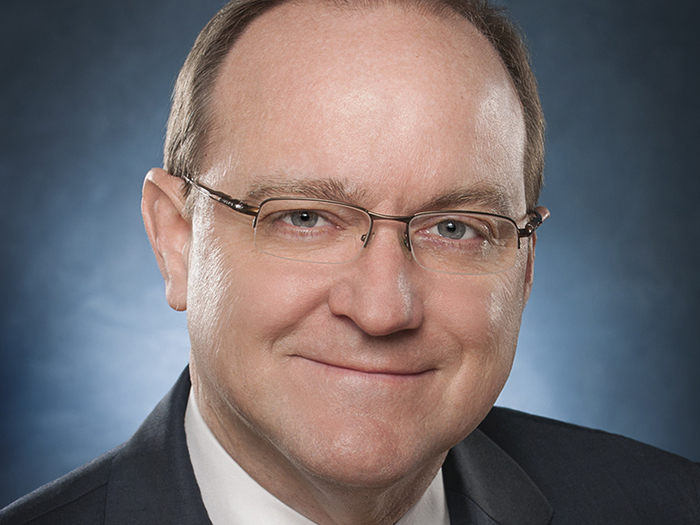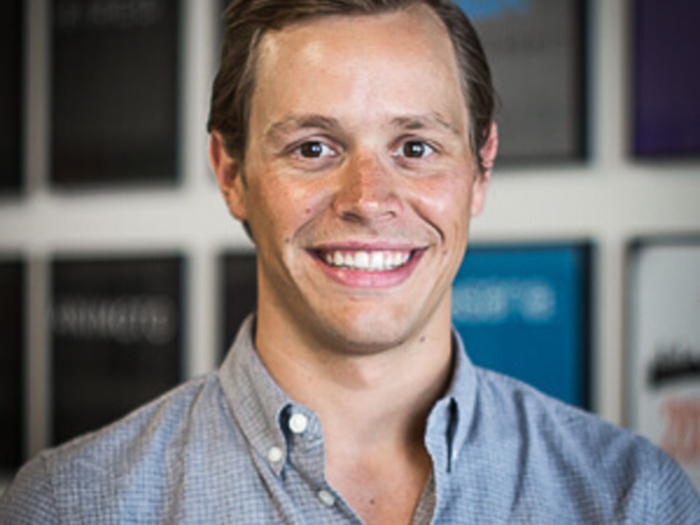PCI Report
Five Highlights from the PCI Annual Meeting
More than 1,000 people attended the Property Casualty Insurers Association of America meeting in Boston earlier this week, a 22 percent increase from the year before, according to David Sampson, president and CEO of the trade association.
The last time the PCI met in Boston, he said, was in2007, when the Red Sox won the World Series, so “there may be some correlation” with the PCI and the team’s presence in the fall classic again this year.
Competition continues to be a crucial aspect of the insurance industry as well, and the PCI Meeting focused on “Essential Strategies for Succeeding in a Hyper-Competitive World.”
“We all know that competition becomes more intense every year and that can be a good thing,” Sampson said. “Competition makes our companies more innovative and efficient.”
Here are seven highlights from the meeting:
1. Focus on Cyber Terrorism
As the world has gotten better at fighting terrorism, the enemy has adapted as well, said Michael Chertoff, former secretary of Homeland Security, and current chairman and co-founder of The Chertoff Group.
“These attacks are smaller scale, harder to detect,” he said. “That is the new face of Al Qaeda. That is the new face of terrorism.”
A different, yet extremely damaging, type of risk is cyber terrorism, he said.
It’s not just theft of identification or private information, but the potential loss of intellectual property and “hacktivism” — where hacking is done for political purposes — that offer business risks. “This issue affects virtually any type of enterprise,” he said.
In addition, organizations must become more aware that some of the worst cyber threats do not come from outsiders penetrating the organization, but from inside.
“I would encourage you to look at your own house,” Chertoff said. “Every institution is potentially a victim of cyber attacks.”
The more we have the “Internet of things,” where more devices have the ability to communicate, “the more we create access points for people who want to have a real world impact and damage or hurt people,” he said.
Insurers should build risk management into their own organizations as well as promote standards for their insureds, he said.
A legislative framework is also necessary to promote information sharing among private and public enterprises, and to establish reasonable standards and regulations.
2. P&C Outlook Remains Stable
The majority of insurers are stable, and Standard & Poor’s anticipates an equal number of upgrades and downgrades of insurance companies over the next 12 months, said Tracy Dolin, a credit analyst with S&P.
The “positive trajectory” for rates since mid-2011 has been dependent on lines of business, geography and loss experience. That’s a good thing for carriers since they have been forced to be less reliant on investment income.
Workers’ comp is the leading line for rate increases, Dolin said, with California the state with the least rate adequacy. The very competitive landscape in that state has left coverage “significantly underpriced,” she said.
Catastrophes — seven of the largest events have taken place in the last 10 years, she said — have had a significant impact on insurers. In the past, Dolin said, there has been a 3 point reflection of Cat losses in combined ratios. That has now increased to 4 to 5 points, although the mild season this year may reduce that somewhat.
3. More Industry Consolidation to Come
“The trend toward consolidation will happen,” said Joseph Brandon, executive vice president of Alleghany Insurance Holdings during a CEO Panel discussion, along with Michael S. McGavick, CEO of XL Group and Benjamin Walter, CEO of Hiscox USA. Moderating the panel was Howard Mills, director and chief advisor, Insurance Industry Group, Deloitte.
“As you see consolidation, you will see people who would prefer not to be part of large organizations, who are perhaps a little entrepreneurial and they will strike out on their own and start companies.” — Joseph Brandon, executive vice president, Alleghany Insurance Holdings
“I don’t think we will become a world of where it comes down to four mega-companies,” Brandon said. He noted, however, that for every action, there will be a reaction.
“As you see consolidation, you will see people who would prefer not to be part of large organizations, who are perhaps a little entrepreneurial and they will strike out on their own and start companies,” he said.
The storm of global regulatory developments is also adding to the trend, said McGavick. “I do think we are seeing a tsunami of regulation across the world,” he said. “This is, I think, another force leading to greater consolidation and I think an unwise one from the point of view of the consumer.”
4. Regulatory Turbulence
Too often, McGavick said, regulatory rule changes done “in response to the last crisis tend to set up the cause of the next.”
And lost in the continuing conversation about changes, he said, is that the insurance industry was “an absolutely stabilizing influence” in the financial crisis. Regulators should take what works from the insurance industry and apply it to banks.
Also, said Walter, the industry needs “a level playing field,” where the same rules apply to everyone, where different structures do not have different regulatory schemes.
Global regulatory uncertainty is one of the industry’s long-term risks, said PCI’s Sampson. He noted it was unclear what role the U.S. government would take regarding new global standards and whether it would “intervene to protect the vibrancy of the U.S. insurance market.”
“What we must guard against are policies that work to hinder the viability of a competitive private insurance market, namely the regulatory overreach by state, federal and international officials and laws that undermine a P&C company’s ability to operate on actuarially sound principals and that interfere with market dynamics,” Sampson said.
5. Uncertainty about TRIA
PCI’s Sampson noted that one of the industry’s short-term uncertainties was whether the Terrorism Risk Insurance Act would be reauthorized by Congress.
“I know that many P&C companies are already making decisions about future policies,” he said. “Certainly the rating companies are contemplating the impact of what the failure to reauthorize TRIA would have on companies.
“It is important that we address this quickly,” he said.
Chertoff noted that, while there is a “kind of terrorism fatigue or kind of anti-government bailout mentality,” he believes TRIA will be extended.
“I don’t believe anybody believes that the private sector is responsible for stopping terrorism,” he said. “That is clearly a government responsibility.”
But defining terrorism is another issue — does cyber terrorism apply to TRIA? “It’s worth putting that on the table,” he said.
“I don’t believe anybody believes that the private sector is responsible for stopping terrorism.That is clearly a government responsibility.” — Michael Chertoff, former secretary of Homeland Security
And the controversy after the Boston Marathon bombings — which occurred close to the site of the PCI Meeting — about whether the event should be defined as a terrorist attack added to the uncertainty.
McGavick said the statements of some politicians that carriers should be prevented from instituting terrorism exclusions in some policies “sent a chilling message” to the industry.
“When the rules are arbitrarily re-established after the fact, they will obviously increase price and lessen availability,” he said.
6. Reinsurance in Transition
There continues to be a more competitive landscape in reinsurance, with alternative capital flowing into the field. Don’t expect that to change, said David Flandro, head of Global Business Intelligence at Guy Carpenter.
He expects downward pricing trends to continue, he said. Guy Carpenter’s midyear renewal brief reported price decreases of 12.5 percent to 30 percent on loss-free programs at July 1. “It’s a good thing for our clients if it can be deployed properly.”
The capital coming into new channels instead of traditional channels also means fewer start-ups, he said.
But traditional reinsurers are fighting back by offering multi-year deals, more favorable terms and conditions, and lower pricing. “They are being more accommodating than they were a year ago,” he said.
Still, about 85 percent of all reinsurance needs are fulfilled by traditional products, said Phil Campbell, executive vice president of BMS Intermediaries Inc., a specialist insurance group that began as a U.K. treaty reinsurance broker.
That remaining 15 percent going to alternative products — combined with a reduced need for reinsurance due to better rate adequacy and better control of exposures — is forcing reinsurers to work harder to cement relationships via better terms and conditions, and lengthier deals. There is only so much you can reduce pricing, he said.
7. Putting a Price on Blackouts
Power outages cause more than $100 billion each year in economic losses, said Robin Luo, vice president, Risk Consulting, The Hartford Steam Boiler Inspection and Insurance Co (HSB). Severe weather, an aging electrical infrastructure and increased reliance on electronic equipment and systems are some of the perils that trigger damage and other losses, he said.
Putting a price on blackouts to allow risk managers and insurers to prepare for and mitigate the damage of such events is why HSB formed a strategic alliance with Verisk Climate to create a consultative tool to assess blackout risks.
The model includes a database of weather modeling, detailed satellite visibility, proprietary knowledge of the electrical grid infrastructure and economic data.
The visibility provided by satellite is key, said Kyle Beatty, president, Verisk Climate. “Often, it’s the trees falling on power lines that cause the problem.”
The worst outages are not necessarily where the wind is worst. Some spots of the power grids are more vulnerable than others. The model looks at various causes of blackouts (hurricanes, winter storms, severe thunderstorms, peak power demands, human errors and other factors) in combination with data from “thousands of events” to assess the risk.
The tool, combined with consultations, is designed to help businesses and insurers assess their greatest risk vulnerabilities and institute disaster planning that can be enacted when needed.
By quantifying the risks, organizations can decide which options are more cost effective, Beatty said. “There has never been a tool to be actually transparent and quantify that in the past.”











